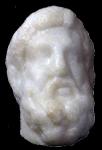Summary (English)
EXPLORATIONS NEAR THE VILLAGE OF STROINO (Stefan Bakardzhiev – st_bakarjiev@abv.bg) The settlement covered an area of c. 26 ha. Occasional finds from the settlement included a hoard of 193 Late Hellenistic tetradracms of Maroneia, Thasos, Athens and Macedonia Prima, a hoard of 29 denarii and antoniani of the first half of the 3rd century AD, a marble Roman-Doric capital of the second half of the 1st century AD and a fragment from a military diploma of a veteran of the Fleet of Misenum dated from the AD 160s to the beginning of the 3rd century AD. In 2014, a number of clandestine excavations were noticed on the site. Bricks, roof-tiles, querns and sherds were found on the ground. The treasure-hunters had excavated a building consisting of four parallel rooms arranged in a line with walls built in rubble masonry and 55 – 65 cm wide. Room No. 1 measured 4.40 m by 4.70 m and Room No. 2 measured 4.85 m by 4.50 m. The finds from the building dated to the 3rd century AD, except for two bronze coins of Augustus: the first one minted in Philippi in 42 BC and the second one minted in Pergamon in 25 – 23 BC. A pit filled with debris from earlier buildings was discovered in Room No. 1, containing sherds, fragmentary building ceramics, fragments of tubuli of hypocaust and a head of a small marble statue of Asclepius. Two strata were documented close to the building: the upper one 28 – 47 cm thick contained finds of the second half of the 3rd century AD and the lower one 23 – 40 cm thick contained finds of the 2nd – first half of the 3rd centuries AD. Among the finds, a bronze appliqué from a military belt of the second half of the 2nd century AD and a bronze fibula related to the Gothic invasions during the second half of the 3rd century AD deserve attention. The foundations of the building cut the lower stratum. The sherds from the excavations dated to the 1st – 3rd centuries AD and were from red-gloss and plain pottery, amphorae and dolia. The settlement was destroyed during the Gothic invasions of the AD 250s – 260s and subsequently rebuilt.
- Stefan Bakardzhiev - Museum of History - Yambol
Director
Team
Research Body
- Museum of History - Yambol






![Download [PDF]](/excavation/skins/fasti/images/results/download_sml.png)
